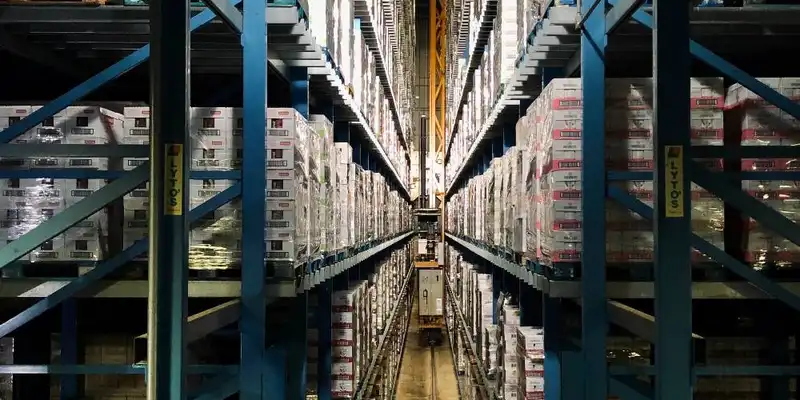Purchase Order vs. Invoice- Why Your Business Needs Both
Purchase orders and accurate invoicing give any company transparency of data to effectively follow budgets and understand where their money is going.
Tracking expenses without these documents becomes near impossible, especially if there are many stages of receiving, storing, and handling of inventory in the supply chain.
Additionally, having purchase orders and invoicing as part of an inventory replenishment plan allows companies to quickly resolve any disputes or challenges that come during the transaction and order fulfillment process.
A clear and formal purchasing system is essential for inventory-based businesses to have confidence in their supply chain operations, such as stock ordering, budgeting, and fulfilling orders efficiently.
Purchase Order Definition
A purchase order (PO) document is a file that is transferred from a buyer to a seller explaining the specifics of the order of goods requested, such as type, quantity, price, shipping terms, and additional delivery requests.
It's essentially a formal product or service request that acts as a legally binding contract. This is for both the buyer (to place a formal order with set agreements in place) as well as the seller (to fulfill the order as requested and agreed upon).
Generally, there is an external and an internal purchase order sent. The external form is sent to the supplier, and the same document is also sent internally to the accounts department of both companies for future invoice approval processes.
Key details in a PO include-
- Date of issue
- Purchase order number (PO number)
- Buyer name and address
- Supplier name and address
- Goods/services description and details
- Terms and conditions of the transaction.
Who Benefits from Purchase Orders?
Essentially, any type of buyer that is purchasing services or goods from a supplier, vendor, or seller would benefit from creating a purchase order. Specifically, when it comes to businesses that handle inventory as part of their operations and sales, purchase orders are essential to keeping operations running smoothly.
When businesses shift and grow, the preferences and demands for purchases will also change. The purchase order can be made to reflect these order changes for both parties and ensure there is a reliable paper trail to minimize inventory errors.
To avoid confusion, mistakes, and possible disputes, purchase orders are extremely beneficial for any type of business that forms relationships with suppliers as part of their operations.
Invoice Definition

Contrasted to a purchase order, an invoice is a document that is transferred from the seller to the buyer. This acts as a summary of the services or goods that have been purchased, or have been agreed to be purchased in the future.
Invoices are either sent after the purchase order and payment are received, or it can be sent after the services/goods have been fulfilled as a request for payment. Sometimes the payment can also be partly settled before an invoice is issued, with the remaining amount being paid after it is sent.
Similar to the purchase order, an invoice is a legally binding document that expresses what is owed (or has been paid) to the seller.
Key details in an invoice include-
- Date of issue
- Invoice number
- Seller name and address
- Buyer name and address
- Number of the purchase order (if issued)
- Price
- Discounts/taxes (if relevant)
- Total amount due and/or owing
- Terms and conditions of the transaction
- Account payable
- Due date of payment
Who Benefits from Invoices?
Invoices are mandatory for all businesses that provide services or goods and are expecting or have received payments. Having clear records of sales and payments is important for businesses to examine any payment discrepancies, budget for inventory, and observe spending habits.
In this way, all businesses benefit from partaking in invoicing. Additionally, buyers will be able to use the invoice as a way to track their expenses, use it as proof of purchase, and settle any refunds or exchanges for their purchases.
Purchase Order vs Invoice- Similarities and Differences
When assessing when to use each document and how they will fit into a company's unique processes, it's important to understand the similarities and differences between invoices and purchase orders.
Purchase Order vs. Invoice Similarities
- They are both commercial communication documents about purchases.
- They both give the information needed to optimize spending.
- They provide transparency in the purchasing process and are both used by accounting departments as records.
- Details included on both are the order details, vendor information, shipping details, quantity, price, and payment terms.
- Purchase orders and invoices are both legally binding.
Purchase Order vs. Invoice Differences
- Purchase orders are sent from the buyer to the supplier, whereas the invoice is the reverse.
- A purchase order is about the intent for purchase, whereas an invoice indicates a purchase has been made.
- Purchase orders are typically one of the first documents sent in the process, whereas invoices are often the last documents sent in the purchase process to request payment.
- Purchase orders prevent overstocking of inventory. Invoices, on the other hand, prevent overpayments and duplicate payments.
- Purchase orders assist with inventory tracking, while invoices assist with spending and tax data.
The Bottom Line- Companies Need Both

Both purchase orders and invoices should be used to maintain clarity in the process of purchasing inventory and selling goods while creating efficient business operations. Although small businesses may view this process as an added task, it's one that is well worth the time to minimize supplier errors and duplicate spending.
When companies use inventory ordering software to assist with replenishment strategies, they can also draw up these legally binding documents digitally. As these systems can be programmed to automatically restock certain products when they begin depleting, it can also automatically send the appropriate purchase orders to internal and external operations.
Ultimately, focusing on the use of purchase orders and invoicing allows businesses to maintain healthy supply chain relationships and enhance inventory management to lead to greater business success.





